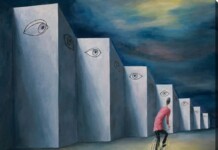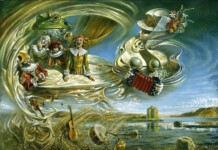- Integrated Creativity Techniques: How to Combine Approaches for Innovation
- Lateral Thinking: A Powerful Creative Problem-Solving Tool
- Gamification Techniques to Boost Creativity & Problem-Solving
- Synectics: Spark Genius Through Creative Thinking
- Method of Focal Objects for Breakthrough Ideas
- Analogy Technique: A Tool for Creative Problem-Solving
- Lotus Blossom Technique — Powerful Technique for Idea Generation
- Mind Mapping for Creativity and Innovation
- The Six Thinking Hats as a Tool for Creativity and Innovation
- SCAMPER — Creative technique for Analyse and Powerful Ideation
- Design Thinking — New Way of Vision and Creative Problem-Solving
- C. Jung’s “16 Associations” Test as a Problem Solving Method
Mind Mapping techniques for creative
problem solving
1. Author
Tony Buzan (2 June 1942 – 13 April 2019) was a British writer, researcher and educational consultant. He developed a techniques called mind mapping and mnemonic systems, and coined the terms mental literacy and radiant thinking. He set down his ideas in a series of books: Speed Reading (1971), Use Your Head (1974), Use Your Perfect Memory (1991), The Mind Map Book (1993), Mind Maps for Business (2010), He has since authored or co-authored over 100 books that have appeared in 30 languages.
As a psychologist, Tony Buzan wrote on subjects relating to the brain, “genius quotient (GQ)”, spiritual intelligence, memory, creativity and speed reading. In 2006 he launched his own software program to support mind mapping called iMindMap.
2. History
Mind Mapping techniques were first introduced by Tony Buzan in his book ‘Use your Head’ (1974). Now there are many forms of mapping, including computer-based tools to support mapping.
3. Description
A Mind Map is a graphic technique for representing ideas and concepts, using words, images, symbols and color.
A mind map is basically a diagram that connects information around a central subject.
It is often created around the main idea or focus drawn as an image in the center of a blank page. The main themes radiate from the central image as branches, which comprise a key images or key words. Topics of lesser importance are represented as connected ‘twigs’, which show relationships among pieces of the whole.
Mind Map is a visual thinking tool that helps structuring information, solving problems, making decisions, recall and generate new ideas.
To make a mind map, one starts in the centre of the page with the main idea, and works outward in all directions, producing a growing and organized structure composed of key words and key images.
4. Main functions
Mind mapping can be used for all of the following:
1. Brainstorming, generating ideas, problem solving.
2. Strategic management thinking, project planning, personal goal setting, organizing and presenting information efficiently
3. Researching and consolidating information from multiple sources
4. Studying and memorization, note taking, learning languages.
5. Enhancing creativity and imaginative thinking.
5. Methodological and theoretical grounds
The concept is based on patterns found in nature and research on how the brain works. Whereas a computer works in a linear fashion, the brain works associatively as well as linearly.
It is also a very intuitive way to organize your thoughts, since mind maps mimic the way our brains think—bouncing ideas of each other, rather than thinking linearly.
Mind maps link and group concepts together through natural associations. This helps generate more ideas, find deeper meaning in your subject, and also prompt you to fill in more or find what you are missing.
Because of the large amount of association involved, they can be very creative, tending to generate new ideas and associations that have not been thought of before.
Association plays a dominant role in nearly every mental function. The mind forms associations almost instantaneously, and “mapping” allows you to write your ideas quicker than expressing them using only words or phrases.
In contrast to brainstorming, where random and ‘off-the-wall’ ideas are encouraged, concept mapping delivers a more structured linking of ideas.
A mind map can at once give you an overview of a large subject while also holding large amounts of information.
Mind Maps use letters and numbers and they also use color and image, which means that they engage the left and the right sides of the brain.
This is why you can increase your thinking power synergistically when you use Mind Maps.
Each side of the brain simultaneously feeds off and strengthens the other in a manner, which provides limitless creative potential.
Mind Mapping is a tool that combines the ‘left brain’ skills of logic, words and symbols with the ‘right brain’ skills of pattern, colour and shape.
By presenting your thoughts and perceptions in a spatial manner and by using colour and pictures, a better overview is gained and new connections can be made visible.
It is need to start with the basic problem as the centre, and generate associations and ideas from it in order to arrive at a large number of different possible approaches.
6. Rules and recommendations
1. Use blank unlined paper – turned on side to ‘landscape’ mode.
2. Use keywords the ones that reflect your main ideas or examples. They exercise your analytical “left brain” and help you find the essence of your subject.
3. Using just one key word per line gives you the freedom to discover the maximum amount of creative associations for your key word.
a) always look for opportunities to shorten it to a single word or figure – your mind map will be much more effective that way;
b) print, using lower case, for clarity and speed.
4. Work quickly to keep the flow of ideas moving.
5. The branches should be organic and free flowing, instead of being structured and rigid.
6. Vary the thickness and length of the lines, text size, color and alignment. Make the branches curve and flow. Every little bit helps engaging your brain.
7. Connect all words or phrases or lists with lines (like rays out from the sun or branches from a tree) to the centre or to other ‘branches’.
8. Draw lines or arrows between ideas that link with one another or go together.
9. Be as visual as you can. It is important to use colors, images drawings and symbols when creating mind maps to further stimulate both memory and imagination.
a) the images make the mind map more interesting and more memorable. In addition, pictures generate far more associations than words do.
b) use colors throughout. Adding colors stimulates right-brain thinking; that is, it stimulates creativity and imagination.
10. Consider using colour coding, to help group ideas, highlight key words or to indicate importance – i.e. red for most important
11. When you get a new idea, start again with a new line from the centre.
12. Don’t worry about trying to prioritize ideas immediately – this can come afterwards.
13. One branch may also be chosen in order to develop a completely new mind map based on that branch.
14. Treat every item in a map is in effect, as a centre of another map.
Tony Buzan suggests the following guidelines for creating mind maps:
1. Start in the center with an image of the topic, using at least 3 colors.
2. Use images, symbols, codes, and dimensions throughout your mind map.
3. Select key words and print using upper or lower case letters.
4. Each word/image is best alone and sitting on its own line.
5. The lines should be connected, starting from the central image. The lines become thinner as they radiate out from the center.
6. Make the lines the same length as the word/image they support.
7. Use multiple colors throughout the mind map, for visual stimulation and also for encoding or grouping.
8. Develop your own personal style of mind mapping.
9. Use emphasis and show associations in your mind map.
10. Keep the mind map clear by using radial hierarchy or outlines to embrace your branches.
7. Procedure and steps
Get a plain sheet of paper and turn it so that it is on its landscape side. You are also going to need colored pens or pencils.
1. In the center of the page, draw a picture or image that represents the central concept and main theme of your mind map.
2. Write down a key word, which represents the central idea. Throughout the mind map, you will use just one key word per line.
3. Figure out sub-themes of your main concept and draw anywhere from five to nine thick branches leading out from your central image/key word. Additional perspectives such as implementation factors or further definition of the solutions could go on those lines.
Try to find an image and a key word for each.
The first level of branches represent the main associations that come from thinking of the central issue. From each main association, you then branch out into sub-associations.
4. Try to think of at least two main points for each sub-theme you created and create branches out to those.
5. Then connect third-level branches from the ends of the sub-branches, and so on. Let your mind work freely by association and have fun.
6. When a mind map is completed, its possible interrelations and possible multiple appearances of issues, and its overall meaning in the context of the problem must be examined.
Group Mind mapping for generate collective creativity
The use of maps to support collective creativity is a more complicate process.
A conference room with a whiteboard must be scheduled. In addition, a set of color markers should be obtained.
1. At the beginning of the session, the facilitator explains the basic mind flow process. Drawing brief sketches on the whiteboard will assist in the understanding of connecting, clustering, coding, and mapping the information.
2. Then the facilitator assists in setting up the mind flow exercise for the team.
3. A circle is drawn on the whiteboard and initial responses (key branches) are connected to the center.
4. The team continues to add information to the key branches in greater detail, creating more branches with yet greater detail as shown in the example.
5. Once the mind flow diagram is completed, a final check is performed and the diagram is dated.
8. Advantages
1. Mind mapping improves problem-solving and encourages bigger-picture thinking.
2. Encourages spontaneity and creativity while maintaining a structure for the generated ideas.
3. Mind maps provide an overview of the subject, displays the relationships between ideas and can also capture a large amount of detail.
4. Highlight connections between different lines of thought make it easier to see contradictions, paradoxes and gaps in material and thinking.
5. Mind maps help to break down large concepts and projects into more manageable parts.
6. Group Mind mapping -is a good way to warm up a group, get people thinking, and engage them in the topic at hand.
7. It is a fast and efficient way for teams generate and capture ideas.
8. Participants can put their ideas down in any order, as soon as they pop into your head. They are not constrained by thinking in order.









